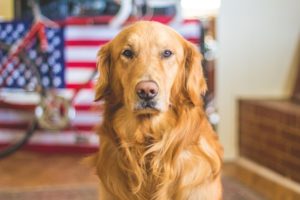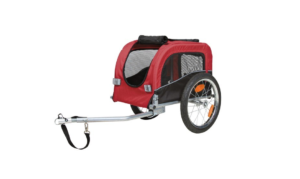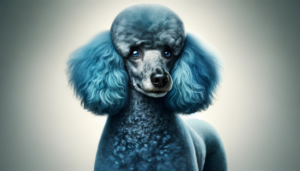As a holistic veterinarian, I’ve always been fascinated by the rich heritage of the Netherlands dog breeds. These breeds tell a captivating story of the Dutch culture and history, and they are so unique that they stand out in any crowd. From the agile Kooikerhondje, the sturdy Dutch Shepherd, to the lovable Wetterhoun, each Dutch breed has its own tale to tell.
Dutch dog breeds have played significant roles in Dutch society, from herding and guarding livestock to hunting and retrieving game. These breeds have shaped canine history, with their distinct traits and working abilities influencing the development of other dog breeds around the world. Whether you’re an enthusiast, prospective pet parent, or just an admirer of canines, understanding the history of these breeds gives us a fascinating insight into the past.
Each Dutch breed was bred to adapt to the unique Dutch climate and landscape, thus, they have developed some common characteristics. They are generally sturdy, versatile, and intelligent, with a strong work ethic. Yet, each breed is unique in its own way. For example, the Dutch Shepherd is a versatile working dog that is sturdy and loyal. On the other hand, the Kooikerhondje is an agile and charming Spaniel, while the Wetterhoun, also known as the Dutch Water Dog, is renowned for its unique coat texture and waterfowl hunting abilities.
As we journey through the history and characteristics of these breeds, we’ll also delve into the importance of preserving these breeds for future generations. It’s crucial to maintain their health and genetic diversity through responsible breeding practices and support from breed clubs and organizations. By doing so, we not only preserve the unique traits and abilities of these breeds but also honor the rich canine heritage of the Netherlands.
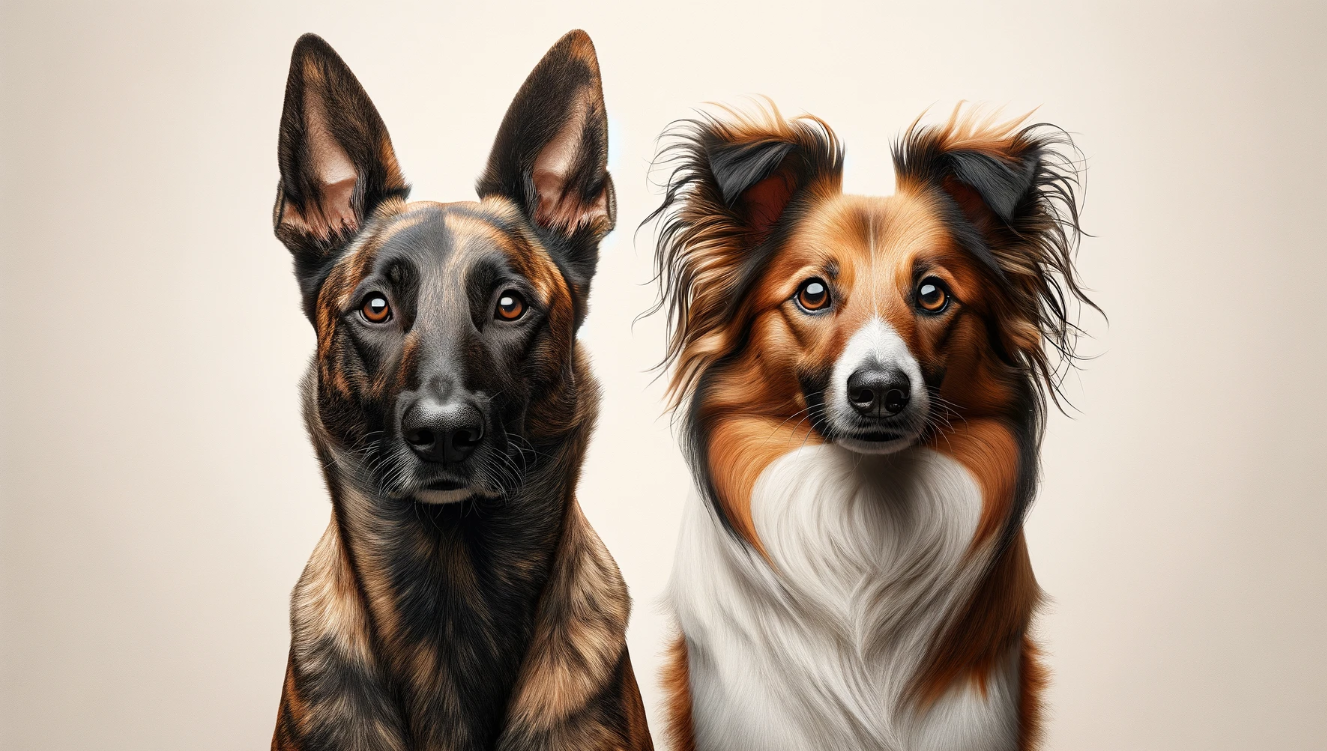
Historical Significance of Dutch Dog Breeds
Prepare to embark on a journey through time, as we explore the rich history and significant cultural role of Dutch dog breeds. These dogs have not only been a vital part of Dutch society but have also shaped canine history on a global scale.
The Role of Dogs in Dutch Culture and Society
In the Netherlands, dogs have held a special place in society for centuries. They’ve been companions, workers, and symbols of national pride. The Dutch have bred dogs for specific roles, leading to the development of some of the most distinctive and recognized breeds in the world.
The Dutch Shepherd, for instance, has been an indispensable part of the rural Dutch landscape, herding sheep and guarding farms. The Kooikerhondje, another native Dutch breed, was bred for hunting waterfowl, their bright plumes used to lure ducks into traps. These dogs were so admired that they frequently appeared in the works of Dutch masters such as Rembrandt and Vermeer.
But the Dutch didn’t just breed dogs for work. The Markiesje, affectionately known as the “Dutch Tulip Hound,” was bred for companionship. Its elegant demeanor and glossy black coat made it a favorite among Dutch nobility and a common fixture in the country’s royal courts.
How Dutch Breeds Have Shaped Canine History
The influence of Dutch dog breeds extends far beyond the borders of the Netherlands. These breeds have made significant contributions to the global canine gene pool.
For instance, the Dutch Schapendoes, a lively and intelligent herding dog, is believed to have contributed to the development of other European herding breeds like the Bearded Collie and the Polish Lowland Sheepdog.
Meanwhile, the Wetterhoun, a breed developed in the Netherlands for hunting and retrieving waterfowl, is a likely ancestor of the well-loved Labrador Retriever. Despite its significant influence, the Wetterhoun remains one of the lesser-known Dutch breeds.
In more recent years, Dutch breeds have gained international recognition in the world of dog sports. The Kooikerhondje, with its agile physique and keen intelligence, has proven to be a formidable competitor in agility and obedience competitions.
These Dutch breeds carry a wealth of history within their genes. Each breed tells a story of the culture that created it, reflecting the changing landscapes, societal roles, and aesthetic preferences of the Dutch people throughout history.
Understanding and honoring this history is crucial to preserving these breeds for future generations. As we celebrate the diversity and uniqueness of Dutch dog breeds, let’s also commit to upholding responsible breeding practices, supporting breed clubs and organizations, and ensuring the survival and prosperity of these remarkable dogs.
The Rich Heritage of Netherlands Canine Breeds
From the bustling city of Amsterdam to the serene countryside, the Netherlands has a rich history of dog breeding. The country has given rise to a variety of distinctive dog breeds that have made significant contributions to the global canine community.
For centuries, Dutch dog breeds have served diverse roles in society, from the resilient Dutch Shepherds herding sheep to the agile Kooikerhondje assisting hunters. These breeds are a testament to the Netherlands’ agricultural past, industrial growth, and cultural evolution.
Preserving the heritage of Dutch dog breeds is crucial for keeping these unique canines from becoming extinct. Doing so allows future generations to appreciate the diversity and richness of Netherlands’ canine history. It also ensures that the unique traits, temperament, and abilities of these breeds are not lost.
Characteristics of Dutch Dog Breeds
Common Traits Among Netherlands Canine Breeds
Most Dutch dog breeds share certain common traits. They are generally strong, hardy, intelligent, and versatile. Known for their working capabilities, whether in herding, hunting, or companionship, these breeds are also lauded for their loyalty.
For instance, the Dutch Shepherd is renowned for its intelligence, versatility, and work ethic, traits that have made it a reliable working dog. The Kooikerhondje, on the other hand, is loved for its agility and hunting abilities.
Adapting to the Dutch Climate and Landscape
Dutch dog breeds have adapted well to the Netherlands’ climate and landscape. The Dutch Shepherd, for instance, has a thick double coat that allows it to work in the country’s often cold and wet climate. The Wetterhoun, also known as the Dutch Water Dog, has a waterproof coat, perfect for its historical role in hunting waterfowl in the country’s many water bodies.
The Kooikerhondje, with its compact size and agile nature, is perfect for navigating the Netherlands’ varied topography, from its dense forests to its open fields. These breeds’ adaptations are a testament to the breeders who developed these dogs to meet the challenges of their environment.
Preserving Dutch Dog Breeds for Future Generations
Preserving Dutch dog breeds involves responsible breeding practices that maintain the breed’s standard while improving overall health. It also includes educating the public about these breeds and promoting them to potential dog owners. Breed clubs and organizations play a critical role in this preservation, providing resources for breeders, organizing events to showcase the dogs, and advocating for the breeds on a global scale.
In conclusion, Dutch dog breeds reflect the rich cultural heritage of the Netherlands. Each breed carries unique traits and histories that have contributed to the Netherlands’ canine history. By preserving these breeds and their characteristics, we ensure that future generations can appreciate the diversity and richness of Dutch canine heritage.
In the world of Netherlands dog breeds, the past informs the present, and the present shapes the future. As we learn more about these wonderful dogs, we can better appreciate the role they’ve played in shaping canine history not only in the Netherlands but around the world.
Netherlands Dog Breeds: Discovering Dutch Canine Heritage
List of Dutch Dog Breeds
When speaking of Netherlands Dog Breeds, two notable breeds that immediately come to mind are the Dutch Shepherd and the Kooikerhondje.
The Sturdy and Loyal Dutch Shepherd
The Dutch Shepherd, known in the Netherlands as the Hollandse Herdershond, is a versatile and reliable dog breed that is indigenous to this country. Originally bred for herding sheep, these dogs are renowned for their intelligence, obedience and physical strength. A defining characteristic of the Dutch Shepherd is their brindle coat, which can range from silver to gold with dark streaks. Their alert expression, combined with their muscular build, gives them a commanding presence.
Dutch Shepherds are quick learners and can adapt to various tasks, making them a popular choice for service roles such as police dogs, search and rescue dogs, and guide dogs for the visually impaired. They are also known for their loyalty, forming strong bonds with their human families.
The Keen and Agile Kooikerhondje
The Kooikerhondje, also known as the Dutch Decoy Dog, is a charming and agile breed with a rich history dating back to the 16th century. They were originally bred for duck hunting and are characterized by their medium size, feathered tail, and distinctive red and white coat.
These dogs have a buoyant, agile movement that is delightful to watch. They are highly intelligent and have a keen sense of duty, making them excellent working dogs. But the Kooikerhondje is not all work and no play. They also make wonderful family pets, as they are known for their gentle demeanor, playfulness, and affection towards their human families.
Both the Dutch Shepherd and the Kooikerhondje are shining examples of the rich diversity and heritage of Netherlands dog breeds. These breeds, like many others from this region, exhibit a balance of physical strength, intelligence, and an amiable nature, reflecting the Dutch values of practicality and harmonious living.
While these breeds are the more popular ones, other breeds like the Wetterhoun, Markiesje, and Schapendoes also contribute to the vast canine heritage of the Netherlands, each with their own unique characteristics and histories. It’s important to note that these breeds have had a significant impact on the Dutch culture and society, and preserving their heritage is integral to maintaining the diversity of the world’s canine population.
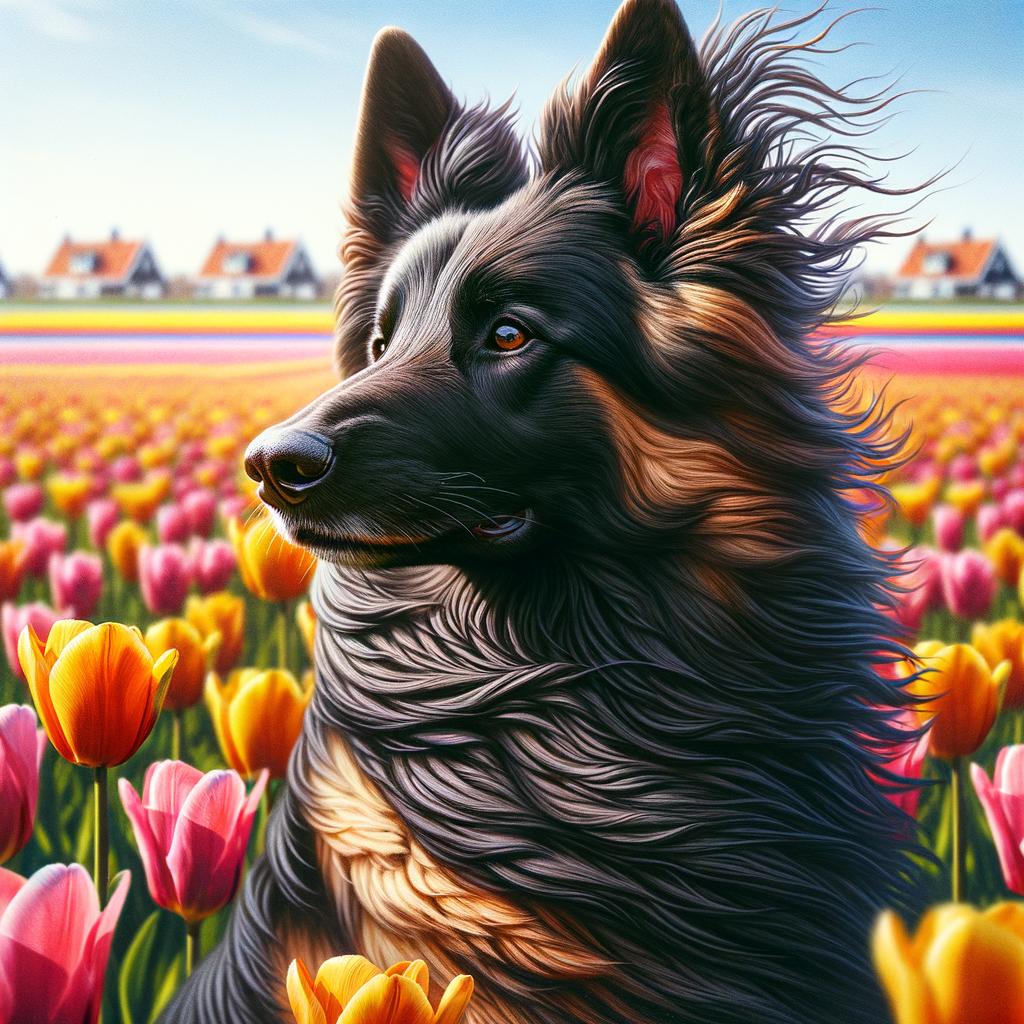
The Dutch Shepherd: A Versatile Working Dog
The History and Origin of the Dutch Shepherd
The Dutch Shepherd, or Hollandse Herdershond as it is known in its native land, is a breed that truly encapsulates the rich heritage of Netherlands canine breeds. Originating in the rural areas of the Netherlands in the 1800s, these dogs were bred to be versatile farm dogs, capable of herding sheep, pulling carts, and guarding properties.
The breed was officially recognized in 1898, but its history goes back much further. The Dutch Shepherd was developed from a variety of herding dogs used in the Netherlands, selected for their hardiness, intelligence, and adaptability. These dogs were not bred for their appearance, but for their ability to work in the diverse and often challenging Dutch landscape.
In the early 20th century, the breed’s population declined significantly due to urbanization and the mechanization of farming. However, dedicated breeders and enthusiasts ensured the survival of this quintessential Dutch breed, and today, the Dutch Shepherd is once again thriving, both in the Netherlands and abroad.
The Temperament and Uses of the Dutch Shepherd Today
Modern Dutch Shepherds are known for their intelligence, loyalty, and versatility – traits that made them invaluable farm dogs in the past. They are energetic and require regular physical and mental stimulation, making them perfect for active families and individuals.
These dogs are also exceptionally trainable, and they excel in various canine sports and activities, including obedience, agility, herding trials, and search and rescue work. Their keen instincts and alertness also make them excellent watchdogs.
Dutch Shepherds are known for their strong bond with their families. They are generally good with children and can get along well with other pets if properly socialized. However, they can be reserved with strangers – a trait that harks back to their days as farm guardians.
One of the most distinctive features of the Dutch Shepherd is its brindle coat, which can range from silver to gold, with dark streaks. This breed comes in three coat types: short, long, and rough. Each type has its own specific grooming needs, but all Dutch Shepherds are relatively low-maintenance in terms of grooming.
Despite their many positive traits, Dutch Shepherds are not the best choice for first-time dog owners. Their high energy levels, intelligence, and need for mental stimulation mean they require an owner who can provide them with the training, exercise, and engagement they need.
To sum up, the Dutch Shepherd is a breed that embodies the heart and soul of the Netherlands. It’s a testament to the country’s agricultural past, a symbol of its canine heritage, and a versatile companion that is as comfortable herding sheep as it is competing in agility trials or curling up on the couch with its family.
The Kooikerhondje: A Charming Dutch Spaniel
The Resurgence of the Kooikerhondje Breed
The Kooikerhondje, a quintessential member of the Netherlands dog breeds, experienced a significant resurgence during the 20th century. The breed, whose history dates back to the 17th century, was on the brink of extinction following World War II. However, thanks to the dedicated efforts of Baroness van Hardenbroek van Ammerstol, the Kooikerhondje was brought back from the brink. This charismatic breed is now one of the most beloved dogs in the Netherlands.
It’s easy to see why the Kooikerhondje has regained popularity in recent years. With its charming personality, cheerful disposition, and striking white and orange coat, it’s a truly lovable breed.
The Kooikerhondje’s Role in Modern Dog Sports and Families
In the modern world, the Kooikerhondje has found a place in various dog sports and as a cherished family pet. The breed’s agility and intelligence, characteristics common among Dutch dog breeds, make the Kooikerhondje a standout participant in dog sports like obedience and agility trials.
In families, Kooikerhondjes are known for their affectionate nature and playful spirit. They are wonderful with children and make excellent companions for people of all ages. Interestingly, they have a unique trait of wagging their tail in such a way that it spins, earning it the endearing name “merry little dog.”
Yet, the Kooikerhondje is not just a household pet or sports star. It carries on its historical role of duck decoy dog, a job it was originally bred for. In rural parts of the Netherlands, you can still find Kooikerhondjes helping to lure ducks into traps, a testament to their enduring instincts and adaptability.
Despite their increasing popularity, it’s essential to remember that Kooikerhondjes, like all Netherlands dog breeds, require responsible breeding and rearing to ensure their health and longevity. Responsible breeders focus on maintaining the breed’s unique characteristics and work to prevent genetic health issues.
In conclusion, the Kooikerhondje embodies much of what makes Dutch dog breeds so remarkable. With their rich history, unique roles, and charming personalities, they truly are a symbol of Dutch canine heritage. Whether they’re participating in a rigorous agility trial or snuggling up with their family at home, Kooikerhondjes bring joy and character wherever they go.

The Wetterhoun: The Dutch Water Dog
Among the fascinating variety of Netherlands dog breeds, the Wetterhoun stands out for its distinctive looks and unique skill set. Known as the Dutch Water Dog, this breed has a rich heritage tied to the waterlogged landscapes of Friesland, a northern province in the Netherlands.
The Unique Characteristics of the Wetterhoun
The Wetterhoun, pronounced as “Vetter-hoon”, is a medium to large-sized breed, with a robust and sturdy physique. It sports a thick, curly coat that is weather-resistant, perfect for its water-based tasks. The breed comes in a variety of colors, including black, brown, and a mix of white and either of the solid colors. The breed’s name Wetterhoun translates to ‘water dog’, which is a fitting description given its affinity for water and its historical role.
What truly sets Wetterhouns apart from other Netherlands dog breeds is their temperament. They are known for being independent, reserved, and somewhat aloof towards strangers. However, they’re also extremely loyal and form strong bonds with their families. Their intelligence combined with a stubborn streak means that they require consistent, positive reinforcement training from a young age.
The Wetterhoun’s Contribution to Waterfowl Hunting
Historically, the Wetterhoun was primarily used for hunting otters and waterfowl in the Dutch waterways. Their water-resistant coats, webbed feet, and strong swimming abilities made them ideal for this job. The loss of otters in Dutch waterways and the decline in hunting led to a reduction in the Wetterhoun population. However, enthusiasts of this breed worked hard to preserve and promote it, ensuring its survival.
Today, while not as common as other Netherlands dog breeds, the Wetterhoun is still valued for its versatility and unique characteristics. Though no longer widely used for hunting, these dogs have found a new role as companion animals. Their loyalty, protective nature, and adaptability make them an excellent choice for families and individuals familiar with dog behavior and training.
The Wetterhoun’s historical role and unique characteristics make it a significant part of Dutch canine heritage. Its ability to adapt, survive, and thrive is a testament to the resilient nature of this breed. As we explore and celebrate the diverse array of Netherlands dog breeds, it’s important to remember and preserve the history and individuality of breeds like the Wetterhoun.
The Markiesje: The Dutch Tulip Hound
Let’s dive into one of the rarest and most treasured of Netherlands dog breeds, the Markiesje or the Dutch Tulip Hound. This elegant breed, laden with personality, is a hidden gem among Dutch canine heritage.
The Elegant Appearance and Personality of the Markiesje
The Markiesje, known for its grace and poise, is a small, pure black canine with a fine bone structure and a glossy, silky coat. This breed emanates elegance, accentuated by its charmingly curved tail and expressive, almond-shaped eyes.
Although the Markiesje appears delicate, they are anything but fragile. This breed is agile, energetic, and brimming with vitality. These dogs are also known for their keen intelligence, making them quick learners and excellent problem solvers.
The personality of the Markiesje is just as attractive as its appearance. These dogs are friendly, affectionate, and deeply loyal. They form intense bonds with their families and are known to be excellent with children. Their alert nature also makes them effective watchdogs, although they are not typically aggressive.
The Markiesje’s Status as a Rare and Treasured Breed
Despite its numerous attractive qualities, the Markiesje remains a rare breed, particularly outside of the Netherlands. This rarity is in part due to its relatively recent recognition. While references to similar dogs can be found in Dutch artwork dating back to the 17th century, the Markiesje was only officially recognized by the Dutch Kennel Club in 1999.
Efforts are ongoing to increase the breed’s presence and stature worldwide. The Markiesje is truly a treasured breed in the Netherlands, revered for its elegance, intelligence, and sterling temperament. To protect the breed’s unique characteristics and maintain its purity, breeding efforts are typically selective and careful, adhering to stringent guidelines set by the Dutch Kennel Club.
Given the rarity of the Markiesje, owning one is considered a privilege. Those fortunate enough to share their lives with a Markiesje find it to be a wonderfully rewarding experience. These dogs not only provide companionship and joy but also a direct connection to Dutch canine heritage.
Preserving the Treasure that is the Markiesje
Preservation of the Markiesje breed is crucial, not just for maintaining the diversity of Netherlands dog breeds, but for the conservation of a piece of Dutch history. Each Markiesje carries with it centuries of cultural significance, an embodiment of Dutch art, lifestyle, and history.
While the Markiesje may be a rare breed, its endearing personality, elegant appearance, and unique place in Dutch dog breeds make it a treasure well worth preserving. As we celebrate Netherlands’ rich canine heritage, let us also remember to protect and cherish these unique breeds, ensuring that they continue to flourish and bring joy to future generations.
So, while discovering the diversity of Netherlands dog breeds, remember the Markiesje, a rare yet precious gem in the Dutch canine crown. And if you are fortunate enough to meet or own one, know that you have come across a special part of Dutch heritage, a living testament to the rich tapestry of Netherlands dog breeds.
Frequently Asked Questions
Q1: What are some popular dog breeds from the Netherlands?
Some popular Dutch dog breeds include the Dutch Shepherd, Kooikerhondje, Keeshond, and the Wetterhoun.
Q2: Are Dutch dog breeds suitable for families with children?
Yes, most Dutch dog breeds are known for their friendly and gentle nature, making them suitable for families with children. However, it’s always important to supervise interactions between children and dogs.
Q3: What is the temperament of Dutch dog breeds?
While temperament can vary between breeds and individual dogs, Dutch breeds are generally known for their intelligence, loyalty, and trainability.
Q4: How much exercise do Dutch dog breeds require?
Dutch dog breeds are typically active and require regular exercise. The exact amount can vary depending on the specific breed and individual dog’s health and age.
Q5: Are Dutch dog breeds easy to train?
Yes, Dutch dog breeds are known for their intelligence and eagerness to please, which often makes them easier to train compared to other breeds.
Dr. Candy, a holistic veterinarian and certified raw dog food nutrition specialist, graduated from Oklahoma State University in 2009 with a DVM and has since specialized in companion animal nutrition, advocating for species-specific diets. With a background in wildlife rehabilitation and oil spill response, she combines holistic health and conventional medicine in her unique approach to treating chronic diseases, allergies, and autoimmune conditions in pets. As the owner of a veterinary practice in Colorado and an author, Dr. Candy is dedicated to educating pet parents and improving the health and happiness of animals.


